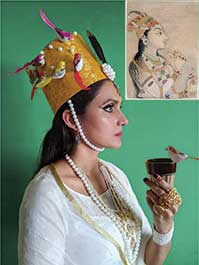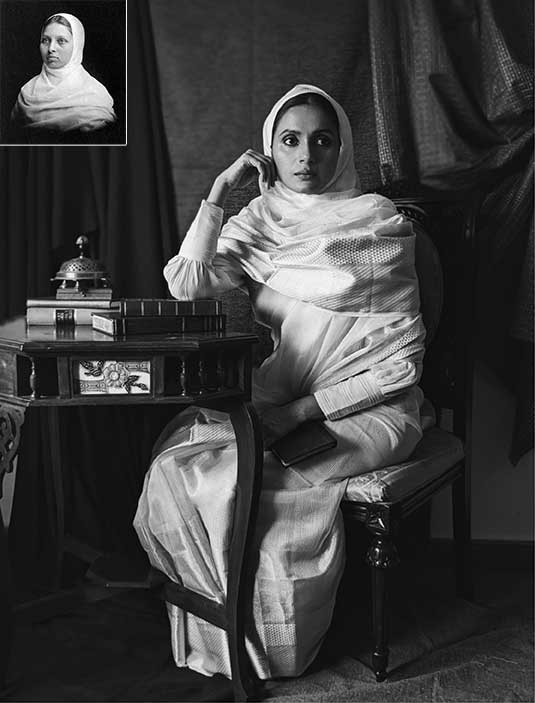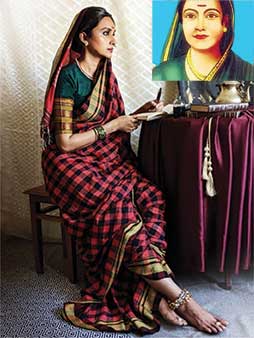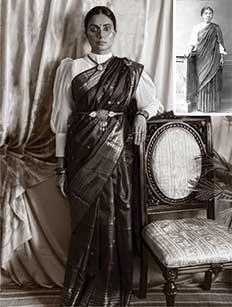Kadambari Misra
‘India’s Freedom Struggle’ was that chapter in our history textbooks that has actually stuck with many of us well into our adult lives. Those of us who did school (and history lessons) in the 80s and 90s will probably recall the names of some of our freedom fighters – mostly men – who bravely defied a cruel, oppressive and blatantly exploitative system, to win India her freedom in 1947.
Looking back, one can’t help feeling that the freedom struggle – and in fact history as a subject – was taught as a movement essentially led and won by men, with the rare woman who got a paragraph-mention in our thin-paged, single-colour history textbooks.
One would think that in the last decades, this would have changed. That, with all our progress, we would by now have recognized that surely both halves of our population have been involved in moving the needle forward. One look at my nine-year-old son’s social studies book sadly proves otherwise. In a chapter titled ‘People Who Made a Difference’ featuring 30 Indians, there are only two women (and only one of these is actually named. Any guesses who?). It’s 2023, and the message going out to our children is still that women have contributed a meagre 3-6 per cent in ‘making a difference’ to our progress as a nation. Let’s allow that to sink in for a moment.
What can we gain from knowing our collective past, and is it worth fighting for? Why is history important at all? How can we as educators and academics, as professionals and parents, as people who deeply care about the world we are building, start to change the narratives of women in history (and therefore that of history itself)? And crucially, how would this then start to change the way we create context, and derive understanding from our past and therefore our present and future?
I’m no historian, nor an academic. I do, however, passionately love stories from the past and the mystery of people and cultures long gone, and there lie the roots and raison d’etre of what has come to be the ‘Iconic Women Project’. My fascination with vintage and history goes back to my father, an academic historian with a keen interest in its impact on our lives today. He would have long, serious discussions on historical characters and eras with my mother, often involving us, or reading aloud to my sister and myself from very heavy books.
Something that we as children found so sedate and boring, that it gave us major giggles. Somewhere though, the enchantment with lives lived and written over, must have remained.
Now, as a designer and art director, I guess I’m picking up those threads and the ingrained love for the stories of people, not just by telling their stories, but actually becoming them through re-enactment. This experience of personifying, of creating different avatars of myself, is profoundly empowering. By tapping into the powers of these incredible women, I am creating and recreating my own identity, and by sharing these stories, inviting others to do the same.

From its inception, there has been a sense of randomness and madness that is sacrosanct to this process. Like in this portrait of Mughal empress Nur Jahan, where whimsical plastic birds replace precious jewels in her headgear. A woman whose contribution is almost unfathomable, not just to the Mughal empire at the height of its power and glory, but also to the legacy of architecture, textiles, and handicraft that we have inherited today.
Moving on from the 17th century, to the stories of women who came more recently in history, one starts to see a closer connection between them and us, similar to the stories of women from pre-Independence India, who sowed the seeds of change for women and girls, and indeed for a more progressive society. These re-enacted portraits are my personal tribute to them, and my way of acknowledging that we are inheritors of their foresight, brilliance, and fighting spirit.
Faced with ridicule, trauma, and personal tragedy, not to mention a society where the concept of women’s rights was anathema, some women quietly and resolutely asserted their voices, leaving behind a legacy that future generations have built on. The portraits below are just a fraction of those women whose contributions are as immense as they are unsung. There are many more such stories on the Instagram handle @iconicwomenproject (and so many yet to be told!)

Pandita Ramabai Saraswati – The rebel reformer
A sanskrit scholar, social reformer, writer and educator, Pandita Ramabai Saraswati was steadfast in her advocacy of equality for women at a time when these concepts were anathema. Although extreme personal tragedy followed her through her life, she remained a fighter for reform, working fervently for education and the abolishment of child marriage. In 1889 she founded Sharda Sadan, a school for young widows in Mumbai that taught curricular and vocational courses. Even her strongest opponent, Bal Gangadhar Tilak, finally praised her, declaring society could do with more women like Pandita Ramabai. She decided to convert to christianity because of her personal convictions, a move that drew strong criticism back home. In 1886 she was invited to the Women’s Medical College of Pennsylvania for the graduation of her distant cousin Anandibai Joshi, where she was welcomed as an important voice for feminism in India. Her seminal book ‘The High Caste Hindu Woman’, where she describes the plight and exploitation of women, came to be considered internationally as an eye-opening study; an Indian feminist manifesto of sorts.

Tarabai Shinde – Trailblazer of feminism in India
Her magnum opus in Marathi, ‘Stri-Purush Tulana’ (‘Comparison of Women and Men’, published in 1882) tears down the patriarchy, and the systemic exploitation and subjugation of women in India. Outraged by an incident where a widow was sentenced to execution for choosing to abort for having ‘loose morals’, Tarabai minced no words when she said, “What’s good for a man ought to be good for the woman as well.” Writing in a time when there was scant public discourse on basic rights for women and girls like education, safety from physical and sexual abuse, and child marriage, Tarabai blazed through the double standards with her powerful prose. She thereafter became a close associate of social reformers Savitribai and Jyotiba Phule, and a part of the Satyashodhak Samaj (‘Truth-finding Society’), espousing education and basic rights for women and Dalits, among other traditionally subjugated groups. A strong believer in agency for all women by right, from widows to sex workers, her social advocacy couldn’t be more relevant to us today in India, as having come this far, we continue to evolve our relationship with feminism.

Dr Muthulakshmi Reddi – A lifelong fight for equality
A woman whose life had many ‘firsts’, Muthulaksmi Reddi’s first real victory was probably to beat the odds and get an education. Brilliant and feisty, she was the first woman to join an all-male college in 1907 where she studied medicine, then the first female surgeon, and in a later avatar, British India’s first female legislator in 1926.
Faced with ridicule and trauma in her formative years for being born to a woman from the Devadasi community, she would become highly empathetic to the community’s plight and as a lawmaker was instrumental in passing a bill against the trafficking of women and children. (The only woman in a panel of over 100 members). Avvai Home and Orphanage was founded by her in 1931, when three girls from Devadasi families knocked on her door one night, having run away from home with nowhere to go. It still stands today as a shelter for women and girls, irrespective of caste or religion.
At the age of 28, her mother succeeded in convincing Muthulakshmi to get married, which she did on the condition that she would be considered always and only as an equal. Today, her statue stands in the premises of the Adyar Cancer Institute, one of the pioneering non-profit centers for oncology that she founded in 1952. In her book ‘My Experiences as a Legislator’, she speaks movingly of her deep imperative to bring change in the lives of women and girls. “No enlightened woman with any self-respect can put up with such one-sided laws which have placed us in an inferior position.”
I like to think of these inspirations as a rabbit hole that keeps on giving, and feel the need to protect the spontaneity, lightness and fun that comes with making these pictures. As with any creative project, the freedom to wander, be lost and make mistakes cannot be compromised. It isn’t one with a clearly charted out agenda, but more like a meandering road of fascination and discovery, and the joy that comes from sharing these stories. As we continue on this project, the one thing I want to hold on to is the open-ended process of fun, experimentation and discovery. Of becoming ‘curiouser and curiouser’, and hope the stories of more amazing women keep revealing themselves to me.
For more on the Iconic Women Project, please visit the Instagram handle @iconicwomenproject. For Kadambari’s TEDx talk on the project, please visit https://www.youtube.com/watch?v=nA6ZtRXi_cM
The main photographs are re-enacted portraits of some of the incredible women of our country while those in the inset are of the real women.
The author is a Bangalore-based entrepreneur, NID Ahmedabad alumna and TEDx Speaker who has led high-impact creative mandates at companies like Coffee Day, Ola & Titan. She has also dreamt up the Iconic Women Project, which is her heartfelt tribute to crazy, gutsy, brilliant women and their stories, told through re-enacting herself as them. She is the co-founder of Adira Thoughtful Gifting, a pioneering startup working with artisans to bring our rich craft and textile heritage into mainstream corporate gifting. She is also the co-founder of Twig Design Studio, a communication design space that helps brands to build their story and presence. She can be reached at iconicwomenproject@gmail.com.
